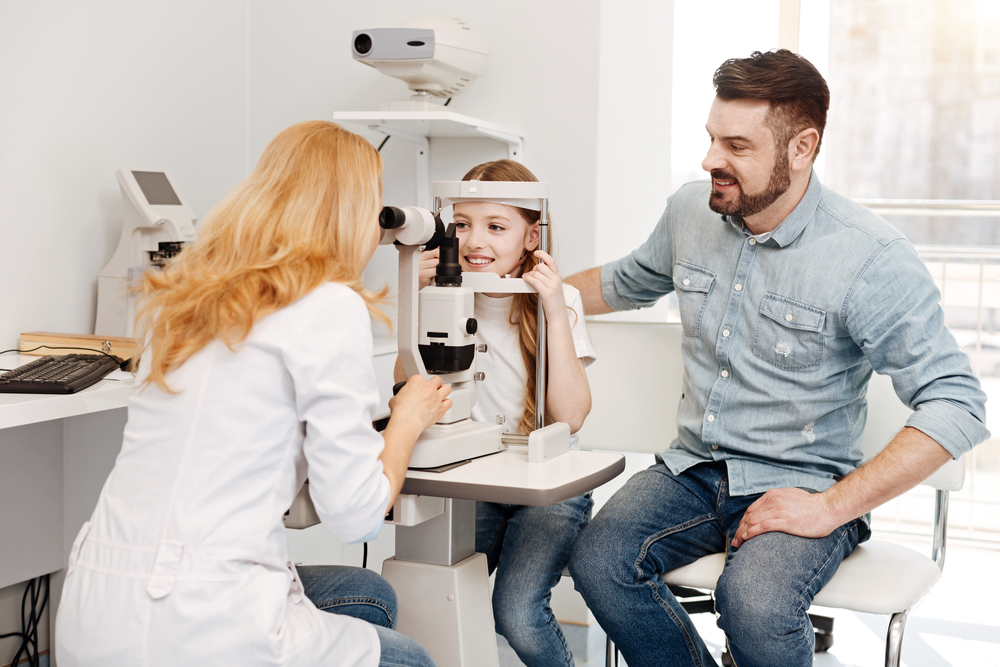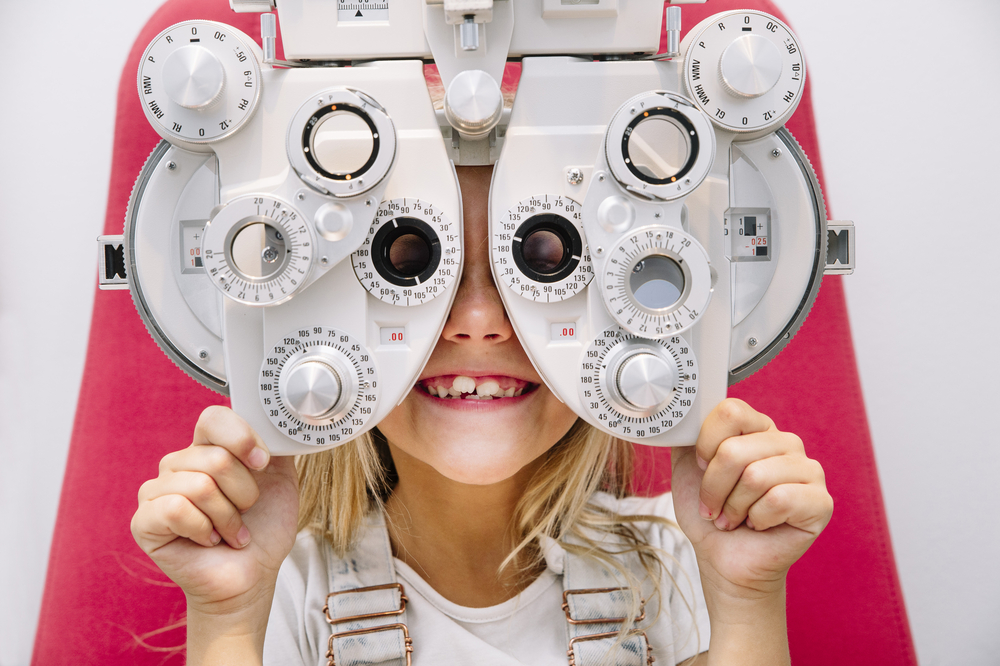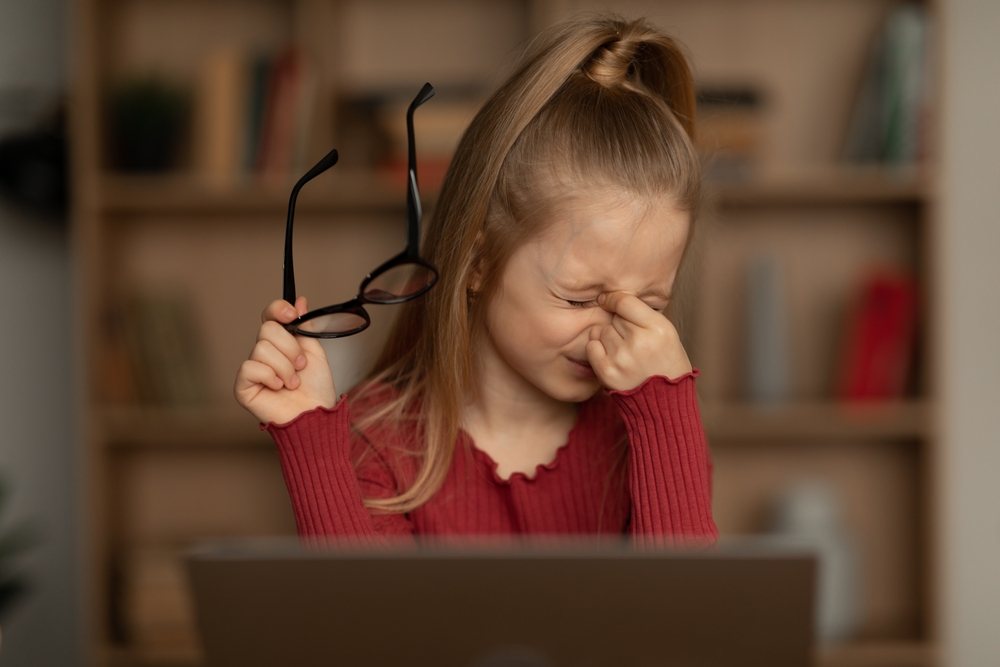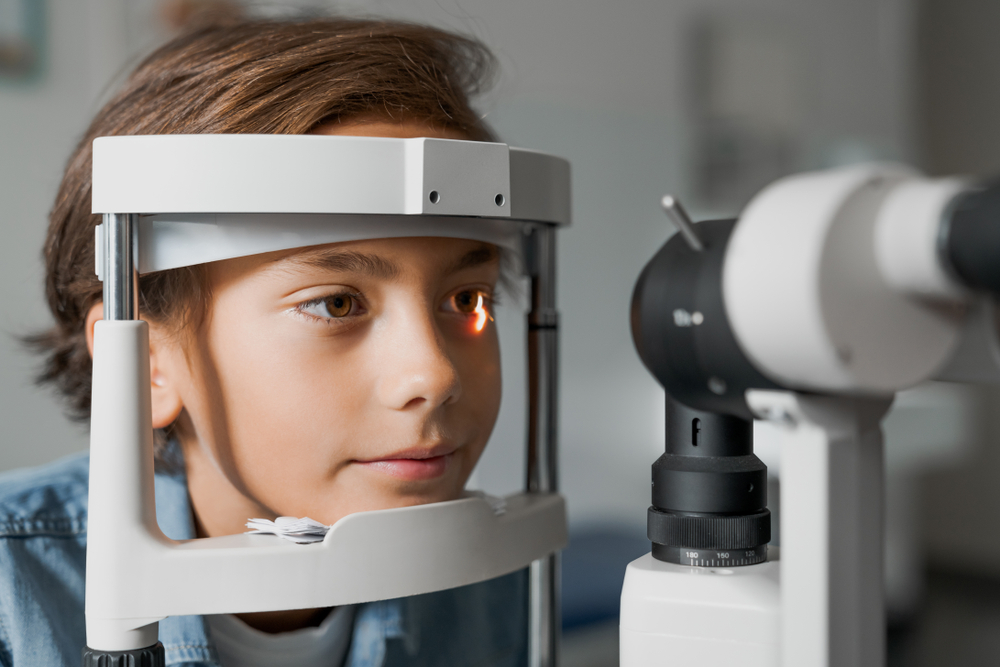

When babies are born, their eyes are not yet fully developed. Their irises have yet to show what color their eyes will be, and they struggle to move their eyes between two images.
But even from the beginning, they can still see things up close. At birth, babies can primarily focus on objects that are eight to ten inches away, which is usually the face of their parents or caregivers.
As they grow, the baby’s eyes develop, and their eyesight comes into focus. You can ensure a lifetime of healthy sight by planning your child’s first visit to their eye doctor.
Keep reading to learn when you should bring your child to see an eye doctor!
Baby’s First Eye Exam
At about the age of six months, you should schedule a thorough eye exam for your baby, even if they are not showing any signs of eye or vision problems. This exam should be scheduled with either your baby’s pediatrician or a pediatric ophthalmologist.
By the age of six months, babies’ eyesight has developed to the point where they have improved control of eye movement and more developed hand-eye coordination. Their depth perception also continues to develop and improve, and their eyes start to work together to see the world in three dimensions.
At this exam, your child’s eye doctor will perform some basic tests that check your baby’s eye movements and alignment. They will also check the overall health of your baby’s eyes.
This first eye exam ensures that your baby’s vision is developing properly and that their eyes are healthy. Though eye health problems are not common in infants, early detection is key to successful treatment outcomes.
Signs of Eye Problems in Very Young Children

Along with scheduling their first eye exam, parents of very young children should be on the lookout for signs of eye and vision problems. Some of the signs that there may be a problem with the health or development of healthy vision include:
- Red or encrusted eyelids, which can be a sign of eye infection
- Excessive tearing, which could indicate blocked tear ducts
- Extreme sensitivity to light might be a sign of elevated pressure in the eye
- Constant eye turning could point to an issue with eye muscle control
- Whitening of the pupil, which could be a sign of more serious eye disease
While it can be alarming to think about an eye problem affecting your baby or young child, it is important to remember that serious eye problems are very rare at that age. If you notice any of these signs, you should talk to your pediatrician as soon as possible.
Maintaining Healthy Vision as Children Grow
You should schedule your child’s next comprehensive eye exam when they are between the ages of three and five, right before they start preschool or kindergarten. Ensuring their vision is clear helps children start off their school years fully prepared to learn.
At this age, children’s eyes are growing and changing rapidly, but they might not have the verbal ability to let you know if they are experiencing problems with their vision. This is also the age where conditions like crossed or lazy eyes are most likely to develop.
A comprehensive eye exam at this age can catch refractive errors that can be corrected with kid-friendly glasses. Catching crossed or lazy eyes at a young age allows eye care providers to correct these problems before they worsen.
When they are younger, parents and caregivers should watch their children for signs of vision problems. Signs that your child might have an undiagnosed vision issue include:
- Squinting
- Sitting close to the TV
- Holding books or electronic screens very close to their faces
- Covering one eye
- Tilting their head
- Frequently rubbing their eyes
- Issues with hand-eye coordination
- Sensitivity to light
If you see any of these signs, especially if your child has not had a comprehensive eye exam since they were a baby, you should schedule an exam as soon as possible to rule out a vision problem.
Eye Screenings vs Eye Exams

Starting in their toddler years, it is likely that your child will be given a vision screening at their annual well-child checkups. As they start school, it is not uncommon for children to have their vision screened at some point during the school year.
While vision screenings can lead to early detection of a vision problem, they are not a substitute for an actual eye exam. If your child appears to have a refractive error based on a vision screening at school, the only way to ensure they get the prescription lenses they need is by scheduling a comprehensive eye exam with a professional eye care provider.
Healthy Vision in Their School Years and Beyond
Once your child has started school, most eye care professionals recommend that you bring them in for annual or bi-annual eye exams. These exams not only guarantee that their vision is clear and healthy, but they also help establish lifelong healthy eye care habits.
From birth, your baby’s eyesight is an important tool for learning, growing, and getting to know their world. You can help ensure their eyes are healthy and their vision is clear by scheduling their first eye exam as you celebrate their first six months!
Are you ready to schedule your child’s eye exam? Contact Northeastern Eye Institute in Scranton, Clarks Summit, Dallas, Forty Fort, Hamlin, Honesdale, Hazelton, Peckville, Montrose, Mountaintop, Pocono Summit, Tuckhannock, Wilkes-Barre, PA, at 570-342-3145 today!